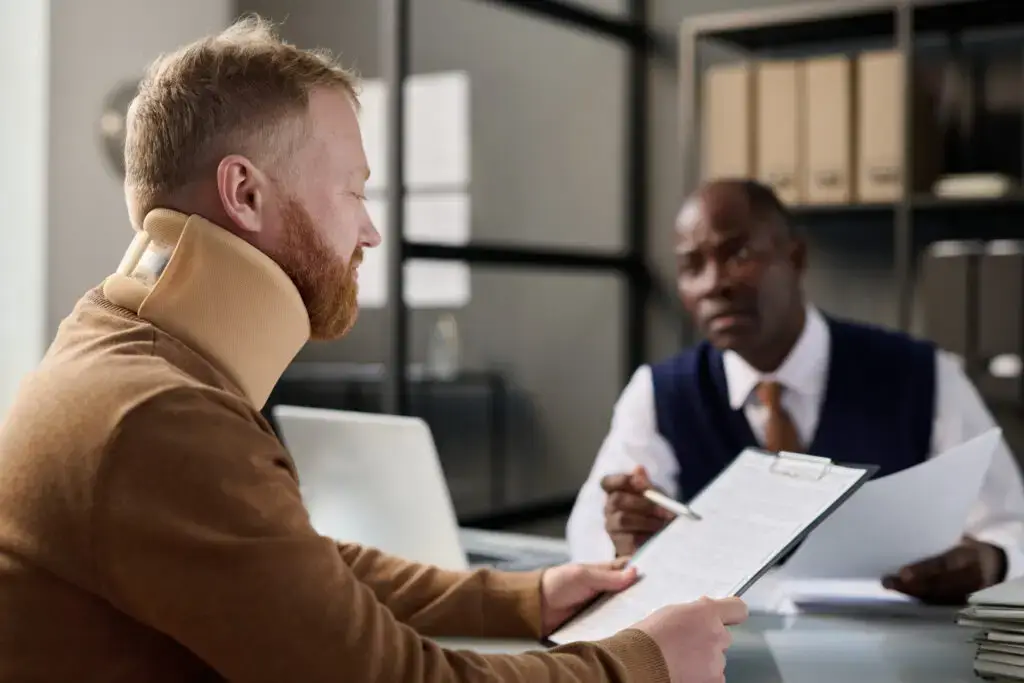What Are Virginia’s Laws For Pedestrians?
In Virginia, state laws are designed to protect both pedestrians and motorists, outlining their rights and responsibilities. Understanding these laws is crucial not only for pedestrian safety but also for maintaining a harmonious coexistence on the roads. In the following sections, we delve into the specifics of Virginia’s pedestrian laws, detailing what is expected of pedestrians and how these laws protect them.

Who is a Pedestrian?
In relation to traffic rules and regulations, the term ‘pedestrian’ has a broader scope than what might typically be assumed. The Cambridge Dictionary defines a pedestrian as “a person who is walking, especially in an area where vehicles go.” However, in the context of traffic laws, pedestrians can also include individuals using mobility aids such as electric scooters, skateboards, or roller skates. There are instances where cyclists also fall under the pedestrian category, although they are expected to yield to walking pedestrians when necessary.
In essence, if you are not operating a car, truck, motorcycle, or any other motor vehicle, you are considered a pedestrian in the eyes of the law. This definition highlights the diversity of road users that pedestrian laws aim to protect.
Pedestrian Laws in Virginia
According to Virginia law, drivers must yield to pedestrians at all crosswalks, irrespective of whether they are marked or not. Pedestrians, on their part, are required to use crosswalks when they are present. It is a shared responsibility aimed at ensuring safety for all.
It’s important to note, however, that while pedestrians have the right of way, they are not permitted to obstruct traffic or engage in risky behavior such as darting in front of moving vehicles. These actions are prohibited under Virginia pedestrian crossing laws.
These laws are implemented in an effort to protect pedestrians as they traverse across Virginia. The expectation is for all parties to adhere to these rules, contributing to the safety of all road users. Unfortunately, when these laws are disregarded, accidents can occur, leading to injuries and, in the worst cases, fatalities.

When Do Pedestrians Have the Right of Way?
In Virginia, pedestrians generally have the right of way in marked crosswalks and unmarked crosswalks at intersections.
Drivers of vehicles are required to stop and yield to pedestrians crossing roadways in any clearly marked crosswalk, whether at the end of the block or in the middle of the block.
This right of way also extends to pedestrians crossing highways at any regular pedestrian crossing included in the extension of the lateral boundary lines of an adjacent sidewalk at the end of a block.
Additionally, drivers must yield to pedestrians at intersections when approaching a street or highway with a speed limit under 35 mph.
In simple terms, if you’re a pedestrian and you’re crossing the street within a crosswalk or at an intersection, you have the right of way. Drivers are legally obliged to permit pedestrians to cross such intersections and crosswalks. However, pedestrians must remember that this right doesn’t provide absolute protection to cross intersections safely—they should always ensure it’s safe to cross before stepping onto the road.
Using Sidewalks
Virginia law requires pedestrians to use sidewalks as long as they are present and in a usable condition. If there are no sidewalks, pedestrians should walk facing oncoming traffic while staying as close to the edge of the road as possible. This rule serves the dual purpose of keeping pedestrians safe from oncoming vehicles and allowing drivers to spot them more easily.
More on Crosswalks
When a vehicle is stopped for a pedestrian, other drivers in nearby lanes or behind the stopped vehicle should not try to pass it.
Even if there are rules in place, when there’s a police officer or traffic signal controlling traffic at an intersection or crosswalk, drivers and pedestrians should follow their instructions and give way.
No pedestrian is ever allowed to enter or cross an intersection in disregard of approaching traffic.
The drivers of vehicles entering, crossing, or turning at intersections must change their course, slow down, or stop if necessary to permit pedestrians to cross such intersections safely and swiftly.
Pedestrians crossing intersections on highways always have the right-of-way over vehicles turning into those highways.

Who Is Liable When a Motorist Hits a Pedestrian?
Determining liability when a motorist hits a pedestrian in Virginia can be complex and often necessitates a thorough examination of the circumstances surrounding the incident. While pedestrian laws are in place to protect individuals on foot, the responsibility doesn’t solely rest on the driver. Factors such as jaywalking, crossing against the signal, or darting in front of moving vehicles can sometimes lead to pedestrians being considered partially or wholly at fault.
However, there are cases where the driver is entirely at fault, such as when the pedestrian is within a crosswalk or on a sidewalk or when the driver is violating a traffic law like speeding, running a red light, or not yielding to pedestrians. In these cases, not only will the driver be held liable, but they could also face severe penalties.
You Deserve Expert Legal Representation
If you’re a pedestrian who has been hit by a motorist, it is pivotal to seek legal representation. An experienced attorney at the law firm of Cantor Grana Buckner Bucci can help you navigate the complexities of law, ascertain who was at fault, and ensure your rights are safeguarded. Our pedestrian accident team can assist in recovering damages for medical expenses, lost wages, and suffering. You don’t have to face this process alone – contact our pedestrian accident attorneys today for a free consultation.











